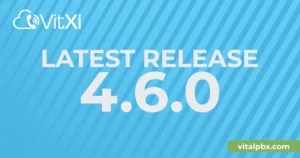The Ultimate Guide to PBX Phone Systems in 2025: Everything Your Business Needs to Know
Is your business communication feeling stuck in the past? Juggling multiple phone lines, struggling with high operational costs, and lacking the flexibility for remote work can cripple growth. In today’s fast-paced digital landscape, a seamless and powerful communication hub isn’t a luxury—it’s a necessity. This is where a modern phone system PBX comes in, revolutionizing how businesses connect, collaborate, and serve their customers.
Forget the tangled wires and clunky switchboards of yesterday. The Private Branch Exchange (PBX) has evolved into a sophisticated, software-driven command center for all your business communications. This guide will walk you through everything you need to know in 2025, from the fundamental concepts to the advanced features that can give your organization a significant competitive edge. We’ll explore the different types of PBX systems, the essential features to look for, and how to choose the perfect solution for your needs.
What Exactly is a PBX Phone System? Demystifying the Basics
At its core, a PBX, or Private Branch Exchange, is a private telephone network used within a company or organization. Think of it as your business’s personal, in-house phone operator. It allows you to have more phones than physical phone lines and enables free calls between users. More importantly, it provides a suite of powerful features that standard phone lines simply can’t offer.
From Switchboards to Software: The Evolution of the Private Branch Exchange
The concept of the PBX isn’t new. It began with human operators physically connecting patch cords on a switchboard to route calls. This evolved into analog and then digital systems that automated the process. However, the true revolution came with the internet and the advent of Voice over Internet Protocol (VoIP), which allowed voice data to be sent over computer networks.
This shift gave birth to the IP PBX, a system that uses an IP network to manage calls. Today, these systems are primarily software-based, offering incredible flexibility, scalability, and a rich feature set that integrates voice, video, and messaging into a single, cohesive platform known as Unified Communications (UC).
How a Modern PBX System Works Today
A modern PBX phone system manages all your internal and external voice traffic. When a call comes in, the PBX routes it to the correct extension, a specific department through an auto-attendant, or a call queue. For outbound calls, it manages the connection to the public telephone network (PSTN).
This entire process is handled by software that can run on a server at your office (On-Premise) or in a data center hosted by a provider (Cloud-Hosted). This software-centric approach means you can manage your entire phone system through a web browser, add new users in minutes, and integrate it with other business tools like your CRM.
Types of PBX Systems: Finding the Perfect Fit for Your Business
Choosing the right deployment model is one of the most critical decisions you’ll make. Each type of PBX system has unique advantages, and the best choice depends on your budget, IT resources, and business goals.
The Traditional Choice: On-Premise PBX
An on-premise PBX means you own and operate the physical hardware and software on your business premises. You have a server in your office that runs the PBX software, and you are responsible for its maintenance, security, and upgrades.
Pros:
- Total Control: You have complete control over the system’s configuration and security.
- Long-Term Cost: After the initial investment, there are no recurring monthly subscription fees for the core system.
- Less Internet-Dependent: Internal calls are not reliant on your internet connection’s stability.
Cons:
- High Upfront Cost: Requires a significant initial investment in hardware and software.
- Maintenance Responsibility: Your IT team is responsible for all maintenance, troubleshooting, and upgrades.
- Limited Scalability: Adding capacity can be complex and expensive.
For more insights on this model, you can explore the advantages of an on-premise PBX.
The Future is Here: Cloud-Hosted PBX (or Virtual PBX)
A cloud-hosted PBX, also known as a virtual PBX or UCaaS (Unified Communications as a Service), is where a third-party provider hosts and manages the entire system in their secure data centers. You access the phone system over the internet.
Pros:
- Low Upfront Cost: No major hardware investment; you pay a predictable monthly per-user fee.
- Ultimate Scalability: Easily add or remove users as your business changes.
- Accessibility & Mobility: Employees can use the system from anywhere with an internet connection.
- No Maintenance: The provider handles all updates, security, and maintenance.
Cons:
- Internet-Dependent: Call quality is directly tied to the stability of your internet connection.
- Recurring Costs: The subscription model can become more expensive over the very long term compared to a one-time purchase.
The Best of Both Worlds? Hybrid PBX Systems
A hybrid PBX system combines elements of both on-premise and cloud solutions. For example, a company might keep a primary on-premise server for control and reliability but use a cloud connection for remote workers, video conferencing, or as a failover backup. This approach offers a great deal of flexibility for businesses with specific or complex requirements.
Must-Have PBX Phone System Features for 2025
A modern PBX is far more than a tool for making and receiving calls. It’s a productivity powerhouse. When evaluating a new phone system PBX, ensure it includes these essential features to keep your business competitive.
- Auto-Attendant & IVR: An Auto-Attendant provides a professional greeting and menu (“Press 1 for Sales, Press 2 for Support”), while Interactive Voice Response (IVR) allows for more complex, automated customer interactions.
- Unified Communications (UC): This is the integration of all your communication channels. Look for a solution that combines voice, video conferencing, instant messaging, and presence (seeing if colleagues are available) into a single application. This is a cornerstone of modern collaboration, detailed further in our look at top UC features.
- Mobility & Softphones: Your business phone extension should not be tied to a desk. Softphone applications for desktops and mobile devices allow your team to make and receive business calls from anywhere, on any device.
- Call Recording & Advanced Reporting: Record calls for quality assurance, training, and compliance. Detailed analytics can provide insights into call volume, wait times, and agent performance, helping you optimize operations.
- CRM Integration: Connecting your PBX to your Customer Relationship Management (CRM) software is a game-changer. This allows for features like screen pops (showing customer info on an incoming call) and automatic call logging, boosting sales and support team efficiency.
- Voicemail-to-Email: Increase efficiency by having voicemail messages automatically transcribed and delivered to your email inbox as an audio file and text, allowing for quick review and response.
Frequently Asked Questions (FAQ) about Phone System PBX
Navigating the world of business telephony can bring up a lot of questions. Here are answers to some of the most common queries.
What is the difference between a PBX and a regular phone system?
A regular phone system typically consists of individual analog lines, each with its own number. A PBX is a private, internal network that manages many extensions using a smaller number of external lines. It adds a layer of intelligence, enabling features like call transfers, voicemail, call queues, and auto-attendants that are not available with standard phone service.
Is PBX technology outdated?
Absolutely not! While the old, analog PBX closets are outdated, the technology has evolved dramatically. Modern IP PBX and Cloud PBX systems are the current standard for business communications, offering advanced digital features, software-based management, and unparalleled flexibility.
How much does a PBX system cost?
The cost varies significantly based on the deployment model and features. An on-premise system has a high initial hardware and licensing cost but lower recurring fees. A cloud-hosted system has little to no upfront cost but a predictable monthly subscription fee per user, which can range from $20 to $50 per user depending on the feature set.
Can I keep my existing phone number?
Yes. In almost all cases, you can transfer your existing phone numbers to your new PBX provider through a process called “number porting.” This ensures a seamless transition without disrupting communication with your customers.
What is the best PBX for a small business?
For most small businesses in 2025, a cloud-hosted PBX is the ideal choice. It offers enterprise-grade features without the high upfront cost or need for an in-house IT team to manage it. Its scalability allows the system to grow perfectly in step with the business. For those with IT know-how who want ultimate control, a flexible software-based PBX like VitalPBX can be deployed either on-premise or in a private cloud.
Conclusion: It’s Time to Upgrade Your Communications
Choosing the right communication system is a strategic business decision. A modern phone system PBX is no longer just about dial tone; it’s the central nervous system of your organization’s interactions. It enhances productivity, improves customer service, and provides the flexibility needed to thrive in a world where work can happen anywhere.
By understanding the difference between on-premise and cloud solutions and prioritizing the features that drive efficiency, you can select a system that not only meets your needs today but is also ready for the challenges of tomorrow. Don’t let an outdated phone system hold your business back. The power of a unified, intelligent, and flexible communication platform is within your reach.
Ready to transform your business communications? Experience the power and flexibility of a modern phone system PBX. Download VitalPBX today and discover a new era of connectivity for your team.




